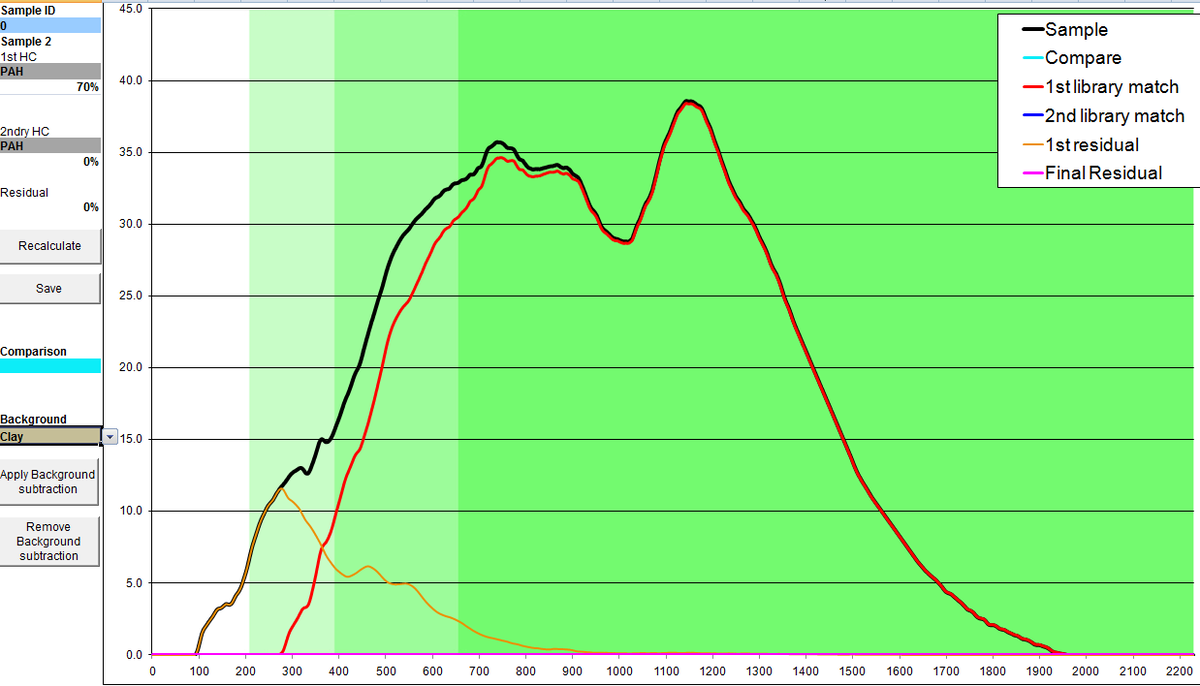Background Organics (BOCs)
The Problem
Background or biogenic organic compounds (BOCs) are found in soil and water samples containing fresh or decomposed leaves and other organic matter (even polystyrene is an organic compound.) This can be a significant issue during autumn and winter when there are large quantities of fallen leaves. Everyday activity quickly crushes the leaves onto the road and increased rainfall carries leaves in the runoff.
When BOCs are analysed by the standard laboratory GC-FID analysis (gas chromatography /flame ionization detection) the method gives a significantly higher result for Total Petroleum Hydrocarbon than the true value, typically of between 2,000 – 4000 mg/kg of TPH. This means it can be classified as hazardous under WM3 guidance even when there are no petroleum compounds present, causing unnecessary and expensive remediation or disposal.
The QED hydrocarbon analyser recognises, but ignores these background organics, giving a true picture of hazardous TPH levels in the sample. If significant concentrations of background organics are detected, the results are flagged by the QED as containing background organics.
The Solution
Here the sample (black line) is compared to a typical clay type background (red line.) The orange line shows the sample remaining after background organics have been subtracted. Background organics obviously made up a large proportion of the TPH present in the sample, which would have led to significant over-reporting when analysed by laboratory methods.
The QED is easy to use and will give accurate and reliable TPH results within five minutes of collecting the sample, either on site or in a simple laboratory, and at low cost. The results and hydrocarbon identification are now accepted by the EA, waste management companies and contractors as sufficiently robust to be used to classify waste soil for WM3.
